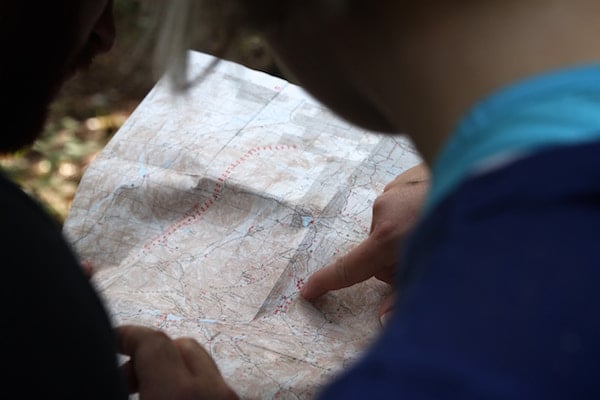Published on
Realizing Transformation through Structural & Cultural Change: Overcoming the Roadblocks

In this, the second installment of a two-part interview, Hugh Brock takes a broader look at the cultural challenges all traditional institutions looking to make changes to their non-traditional offerings face. To see the first installment, where Brock reflects on the structural challenges institutions must overcome to reimagine continuing education, please click here.
The EvoLLLution (Evo): Where is the biggest divide between “CPE thinking” and “traditional” university thinking?
Hugh Brock (HB): UBC—along with most Canadian universities—is going through a huge cultural shift, from operating from the perspective of the educator, the operating from the perspective of the learner. Looking at the higher education landscape in general, if an undergraduate student comes to Stanford, they can design their own undergraduate degree. I don’t know of any Canadian university that does that. Students choose between majors and pick a few electives, and UBC has a smattering of interdisciplinary degrees, but overall we expect students to fit within our needs, rather than the other way around.
Our previous president began this process of reforming CPE by exploring the question of how to develop programs that provide learners with what they want, how and when they want it. That’s the subversive element to CPE. It looks at education from the perspective of the student. In a traditional university, that change in perspective is a step too far for many professors.
Evo: As UBC goes through the process of decentralizing, how do you ensure that the student receives a high-end customer experience when they’re engaging with a faculty or division that hasn’t necessarily been focused on the customer side of the process?
HB: A lot of what we’ve been trying to do is incentivize people to learn that customer-service mindset. The university mindset right now is that a student is lucky to be at UBC—and it’s true that people are practically beating down the door to attend our undergraduate programs. CPE is a different beast altogether, though, and UBC is not used to a world in which we’re a decade behind equivalent competition. We don’t have that customer-service orientation, and that will take some time.
When bringing change to universities, you have to start with early adopters, demonstrate early success, have other departments recognize that success and, ultimately, motivate them to repeat that success. You can’t tell people what to do because they will automatically shut down.
We’re starting to have early successes on our CPE offerings, and otherwise resistant units are beginning to recognize how CPE can be the means to greater student involvement and investment in the university. We can point to cases where a unit has started with a non-credit course that costs $50, and that $50 course gets high enrollment numbers and high brand recognition. That can act as a recruiting funnel. If you add a few more courses, it can roll up into a non-credit certificate, and as the market begins to recognize the brand it might ask for a further ability to roll those credits into a degree or diploma. When it works, it works tremendously well—and all from the starting point of a non-credit course that’s a minimal investment for the student.
That’s when the magic happens, when other departments realize that this isn’t about developing something new. It’s about doing something we’ve always done, even better.
Until a Dean or program coordinator experiences this, they don’t really get it.
Evo: You’re in the process of bringing CRM and SIS technologies on board, with an eye to 2020. What role do you think technology plays in your capacity to create this institution-wide vision for Extended Learning?
HB: The role of technology lies in lowering barriers. At the moment, we do not have a working non-credit registration system and while we’re making strides in the right direction it’s going to take time for us to get there. You have to build momentum to show that CPE is working in order to get institutional buy-in on spending money to invest in those technologies, so it’s a bit of a chicken-and-egg scenario. It’s important for everyone at UBC to become uncomfortable with the status quo, and to realize that with a few changes the university as a whole would be in a better position. We’re still at the point where we’re trying to justify the existence of CPE, rather than asking, “How do we do this as well as possible?”
Convincing universities and boards and finance executives that CPE is a good investment is a challenge, because continuing education, historically, has not been a money-maker here. We need to convince people to invest into infrastructure now so that CPE can operate properly and diversify revenue streams in the future, but it’s not an easy sell.
Evo: As you look to the next few months, what are the key checkpoints that extended education needs to progress through to maintain your vision to having the revamped CPE fully operational by 2020?
HB: The first is that we need to become committed to continuous quality improvement, using metrics and performance indicators to guide our progress. If we’re buying into the notion that Extended Learning is an important and worthwhile department it has to have the same standards of excellence applied to it as the rest of the university. To date, we’ve not done market research into continuing education. We’re not critically looking at what we’re doing and how we can do better. We’re also not identifying where we’re starting to lag or where we’re losing market share. Finally, we have no way of identifying students who are likely to be loyal and come back for future education. We need to address these gaps to structure ourselves for growth.
We also need to get people within continuing education to embrace UBC’s standard of excellence within teaching itself, and provide the pedagogy and learning that’s expected at a great university. Continuing Studies had great customer service and more of a student focus, but if we’re committed to the idea of decentralization we have to bring that customer service mindset into the Faculties as well. Universities have lots of brand marketing experience, but very little product marketing experience. We need to bring that into focus, and providing a more service-oriented approach will help with that.
CPE has three goals: help the faculty succeed; help non-traditional learners succeed; and contribute revenue to the university. It’s quite a switch to go from Continuing Studies, which operated as a self-contained unit, to realizing that we have an important role as service providers, both to the student/customer but also to the faculty. Until CPE feels part of the university and part of the mission, and takes pride in what it’s doing on behalf of the university, we can’t really get there.
Evo: Is there anything else you’d like to add about the work you’re doing to create this supportive environment that benefits non-traditional learners at UBC?
HB: To reiterate a similar point made above, start with the early adopters, get early successes that you can point to, and incentivize faculties and departments to buy into building success in their own right. We’re an evidence-based organization, and when we can point to relevant data within the university – why this faculty’s approach to CPE succeeded while the other approach failed – we can better make our case to internal audiences. As I said earlier, alignment building is key. We need to align incentives so that those farthest down the chain see a net benefit in investing time and money into CPE. Our approach is to find and convert the willing, support them like crazy and let them be our advocates, and let CPE spread from there.
Where we’re behind the curve is in creating the support infrastructure that makes the experience seamless both for internal proponents and students, so that everyone knows what to do and how to do it. That’s where we’re furthest away, and where we need to invest the most time in exploring. There’s a lot of moving parts that need to be taken into account.
For example, we need to find a way to make non-traditional learners feel a part of the university without, frankly, having it cost too much money. For example, CPE learners might ask for a UBC library card, and while we don’t have a problem with that on a departmental level, it turns out that library journal fees are based on the number of readers we have. So, if we increase the number of library users by 10,000 CPE learners, we’ve just increased library costs by $500,000.
Other great universities, particularly within the American system, give non-traditional learners alumni status, but that’s not something we’re ready for yet. Their perspective is that if a non-traditional student feels a connection to the university, they might someday be a donor, whereas in Canada we tend to think of CPE students as second-class citizens. It’s a cultural difference and a short-sighted approach, but we’re beginning to catch up with our American counterparts in this regard.
Canadian universities are behind their global counterparts in developing programs for non-traditional learners, and the competition for this audience is only going to grow. It’s not an easy path, and yet when you look at continuing education, it’s amazing how often the gold standard is being set by the large public institutions and the Ivy Leagues—the University of Washington, UCLA, and Cornell come to mind. The great universities are doing the best job at CPE, yet we in Canada tend to have the attitude that great universities don’t trouble with this sort of thing. At the end of the day, that’s the mind shift. Great universities can and must do this well. If we can get to the point where that assumption is taken for granted, we’ll know we’ve arrived.
This interview has been edited for length and clarity.
Author Perspective: Administrator


